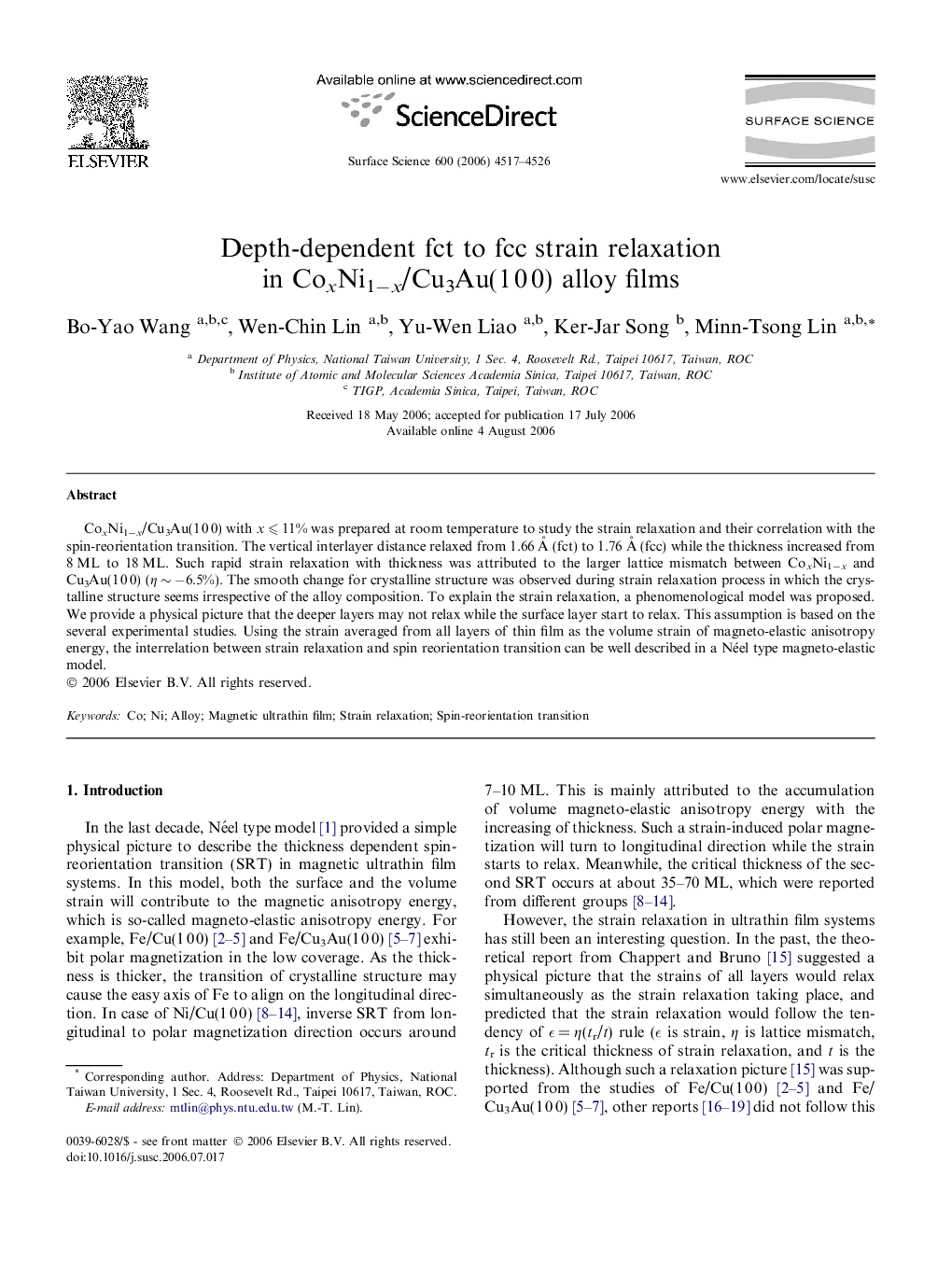| Article ID | Journal | Published Year | Pages | File Type |
|---|---|---|---|---|
| 5425254 | Surface Science | 2006 | 10 Pages |
CoxNi1âx/Cu3Au(1 0 0) with x ⩽ 11% was prepared at room temperature to study the strain relaxation and their correlation with the spin-reorientation transition. The vertical interlayer distance relaxed from 1.66 à (fct) to 1.76 à (fcc) while the thickness increased from 8 ML to 18 ML. Such rapid strain relaxation with thickness was attributed to the larger lattice mismatch between CoxNi1âx and Cu3Au(1 0 0) (η â¼Â â6.5%). The smooth change for crystalline structure was observed during strain relaxation process in which the crystalline structure seems irrespective of the alloy composition. To explain the strain relaxation, a phenomenological model was proposed. We provide a physical picture that the deeper layers may not relax while the surface layer start to relax. This assumption is based on the several experimental studies. Using the strain averaged from all layers of thin film as the volume strain of magneto-elastic anisotropy energy, the interrelation between strain relaxation and spin reorientation transition can be well described in a Néel type magneto-elastic model.
